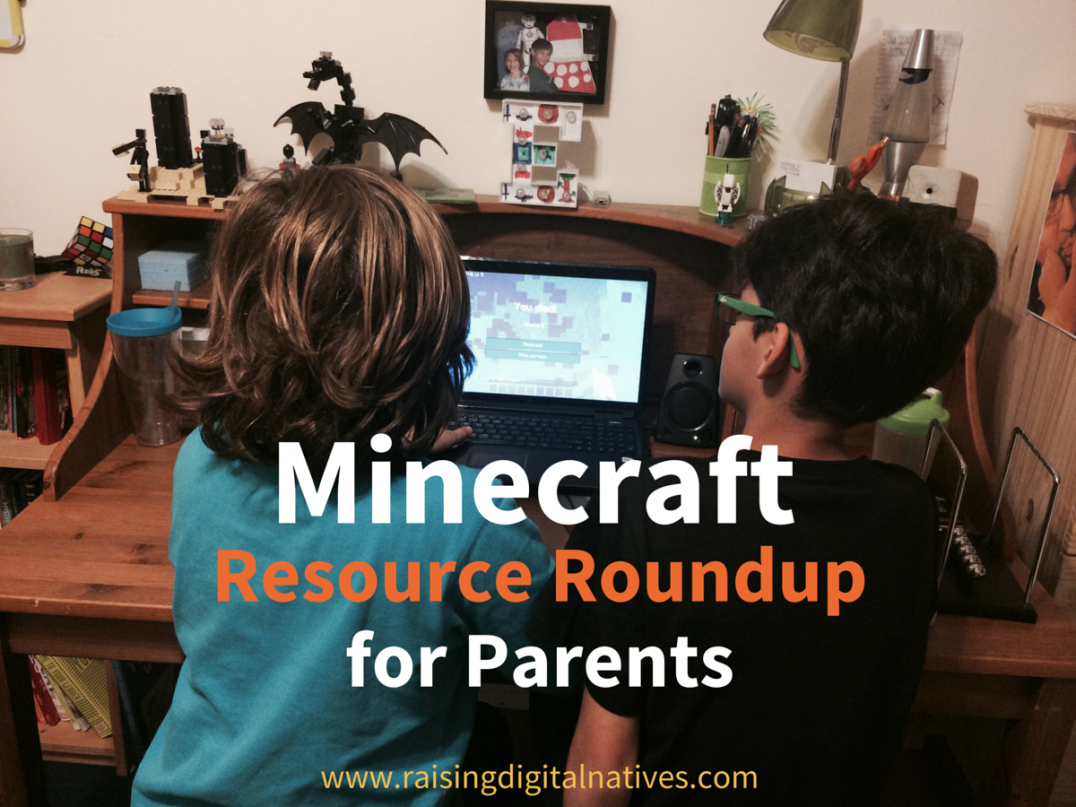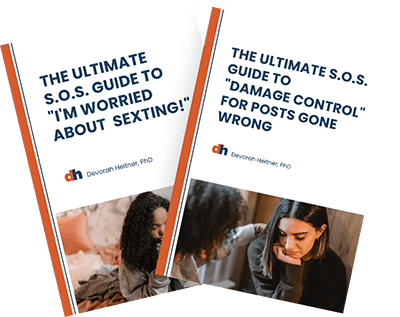 Kids love Minecraft. Many adults too! But lots of parents tell me they don’t understand their child’s relationship with Minecraft. Or that their kids don’t want to sleep, eat, or do their homework because they are playing Minecraft (or other games, for that matter). Or that they have gaming “rage” from conflicts with friends or siblings—fighting about the game, or inside the gaming environment itself. Or that they want to spend all their time watching other players play the game on YouTube—many parents find this to be the most confusing behavior of all.
Kids love Minecraft. Many adults too! But lots of parents tell me they don’t understand their child’s relationship with Minecraft. Or that their kids don’t want to sleep, eat, or do their homework because they are playing Minecraft (or other games, for that matter). Or that they have gaming “rage” from conflicts with friends or siblings—fighting about the game, or inside the gaming environment itself. Or that they want to spend all their time watching other players play the game on YouTube—many parents find this to be the most confusing behavior of all.
What’s So Great About Minecraft?
I recently interviewed two young gamers about Minecraft. Their names are Jonathan and Elliot, and they explained what they love about it. Their extensive familiarity with the options and different modes of play were impressive. The appeal of a game where you have so much control over designing the “world” you are playing in makes sense to me.
“You go to options and you create a new world.”
Think about the life of your child and how much control they have over their day-to-day world. Sometimes it feels like we run them from activity to activity, and you can understand how appealing it might be to them to actually create, navigate, and manage their own world.
This instinct is perfectly natural. Minecraft seems to understand this, and offers a variety of fun and different challenges. For example, you can play in “survival mode,” “creative mode,” and “adventure mode.”
You can play alone or with friends. As the Minecraft site explains, it’s “a place where everyone can play together, no matter how far away they live in real-life. Somewhere to cooperate, compete, and adventure.” As Elliot explains about his gaming friends:
“Sometimes I am playing and I don’t even know that
[my friends] are online [playing the game too].
I’ll see that they want to talk.”
Gamers can also create “Minecraft Realms,” where up to 10 people can play on at once (though up to 200 people can be given access). Jonathan gushes about this feature:
“You can choose what type of world you want. Amplified features, huge mountains, large biomes in a jungle.”
Both single-player and multiplayer modes are fun, according to Jonathan and Elliot. What strikes me the most is the boys’ pride in their accumulated knowledge and skill as well as their camaraderie in playing together.
Mediating Minecraft—and Other Games
How can you integrate your kids’ gaming obsession into the rest of family life? Sure, the game is creative—but sleep is also good for creativity! Even if you feel that it’s a good creative outlet for your kids, there still have to be boundaries.
My interview subjects—and more importantly, their parents—feel that gaming integrates pretty well into the mix of friendship, homework, family life, and sleep—with some important caveats! Jonathan’s mother clarifies that his access to gaming time is dependent on having finished homework and keeping up with his responsibilities at home such as keeping his room clean.
Jonathan’s and Elliot’s mothers both say they feel positive about their sons’ gaming for the most part, and that when they do feel like it is “too much” or “interfering” with other activities, the parents work with the boys to balance it with other activities.
Balance is a good approach—and a signal too. In my experience working with parents, there are simple signs that gaming has become a problem. For instance, when limits that you set are met with extreme reactions, this is a signal that a new approach to gaming may be necessary.
My recommendation: Get involved. Know what you’re kids are playing and with whom they are playing, too. As I advise in my new book, Screenwise: Helping Kids Thrive and Survive in Their Digital World, you want to familiarize yourself with their favorite games—and even celebrate their successes!
Minecraft Resources for Parents
Here is a resource roundup of great sources for more Minecraft learning.
- Clean Minecraft Videos is especially useful for younger Minecrafters who enjoy watching Minecraft videos on YouTube. This is a curated resource of over 200 videos that are appropriate for all ages. I met the creators of this website at ICE Illinois, an educational technology conference and I was so impressed with their initiative. The creators are students themselves, and they saw a need. Because the Minecraft videos you might find on YouTube are sometimes filled with language you’d prefer not to share with your second grader, they provided a fun, alternative source.
- Alexandra Samuel’s “Family Minecraft Policy” will be helpful for many families trying to find the balance of how Minecraft fits into family life, school, and your day-to-day routine. Dr. Samuel is one of my favorite researchers on how we live with, learn with, and work with technology.
- This quick slideshow offers 5 Reasons to Get More Girls Playing Minecraft. It was created by Leah Rocketto on Pop Sugar. Reasons include: It introduces them to new careers and it offers a level playing field, with boys and girls, in a gaming environment.
- The Minecraft Generation is an article by Clive Thompson, which appeared in a recent issue of the New York Times. This is a very thoughtful analysis of how the game is nurturing a generation of players to be experimental in the digital world in ways that lead to deep learning.
My advice, as always, is play what your kids play. There’s no better way to learn about their world than to try to see it through their eyes. You don’t have to become a Minecraft master—just experience it enough to understand and appreciate their skills and experience.
Devorah Heitner is the author of Screenwise: Helping Kids Thrive (and Survive) in Their Digital World and the founder of Raising Digital Natives.

